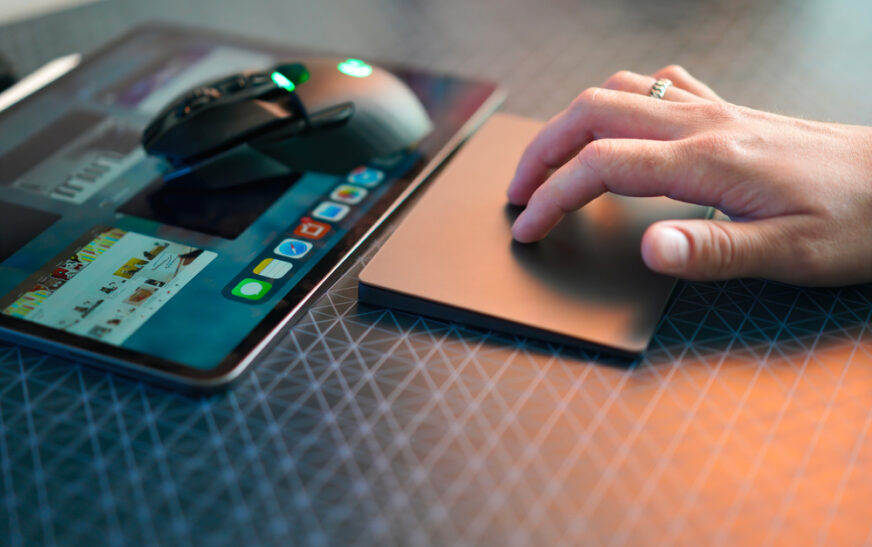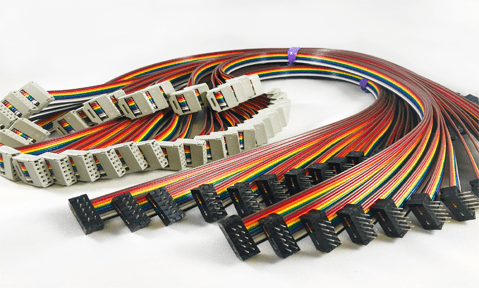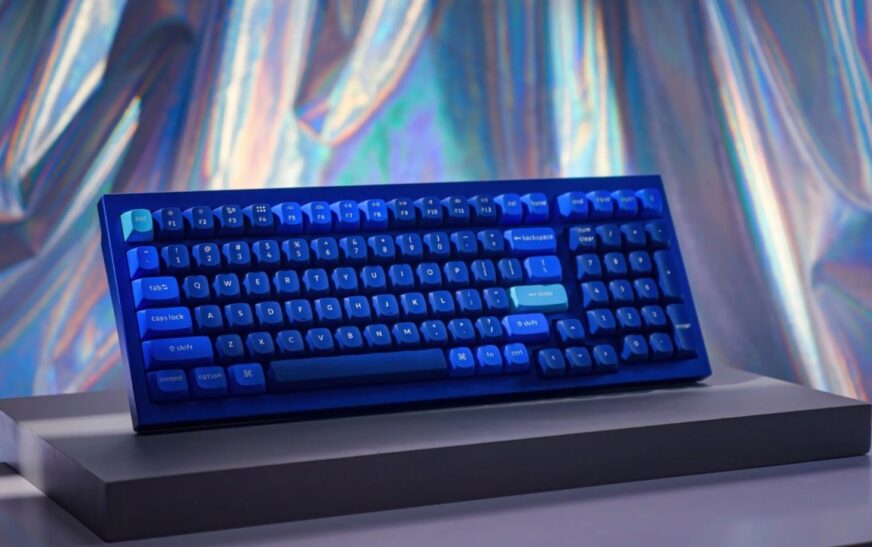The trackpad, commonly known as a touchpad, serves as a vital input device on laptops and various portable computing devices. Its user-friendly design has transformed the way individuals engage with their devices, facilitating a seamless, gesture-driven experience that is now fundamental to contemporary computing. This article explores the history, technology, functionality, benefits, drawbacks, and future developments of trackpads, offering an in-depth insight into this essential element within the field of computing.
1. The History of Trackpads
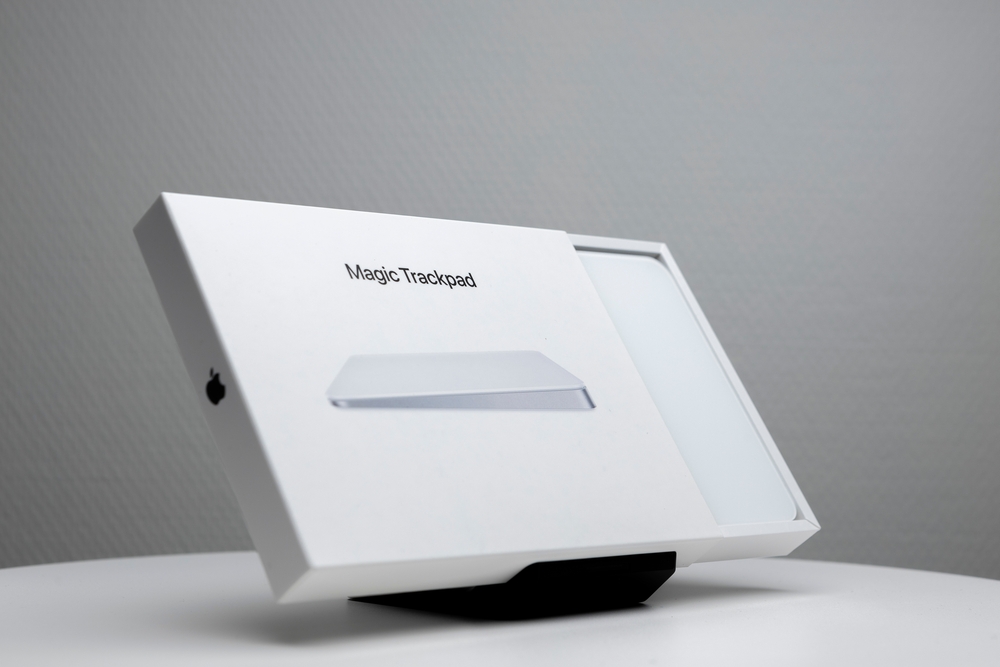
The evolution of the trackpad commenced in the 1980s, paralleling the emergence of portable computing devices. Initially, these devices depended on external peripherals such as mice and keyboards, which constrained both mobility and user convenience. As the popularity of laptops surged, manufacturers began to explore integrated solutions that would enhance the design of portable computers.
a. Initial Developments
The first trackpads were created by companies including Apple and Synaptics. In 1994, Apple launched the inaugural trackpad within its PowerBook series, enabling users to manipulate the cursor through finger movements on a smooth surface. This groundbreaking development set the stage for subsequent advancements in touchpad technology.
b. Technological Progress
Throughout the years, trackpad technology has undergone remarkable advancements. The initial models utilized resistive technology, which necessitated pressure for input registration. In contrast, contemporary trackpads employ capacitive technology, facilitating multi-touch gestures and offering greater precision in control.
2. Understanding Trackpad Technology

1. Capacitive vs. Resistive Technology
The two main categories of touchpad technology are capacitive and resistive:
Capacitive Touchpads: These devices detect touch through the electrical signals produced when a finger makes contact with the surface. This technology supports multi-touch capabilities, allowing users to execute a range of gestures, such as pinching to zoom or swiping with multiple fingers.
Resistive Touchpads: In contrast, these touchpads require physical pressure to register input. They are composed of two flexible layers with a small gap between them. When pressure is applied, the layers come into contact, completing an electrical circuit. Although resistive touchpads can be operated with any object, including a stylus or gloved hand, they are not well-suited for multi-touch gestures.
2. Surface Material and Design
Trackpads differ in material and design, which can significantly impact their performance and user experience. Most contemporary trackpads feature a smooth glass surface that enhances comfort and glide. Additionally, the size and configuration of the trackpad can influence usability; larger trackpads facilitate more extensive gesture control, whereas smaller ones may be less user-friendly.
3. Sensor Technology
Modern trackpads incorporate various sensor technologies to improve functionality. Certain models utilize pressure-sensitive technology, enabling users to apply varying levels of pressure for different actions. For instance, a gentle tap may open a file, while a firmer press could initiate the launch of an application.
3. Functionality of Trackpads
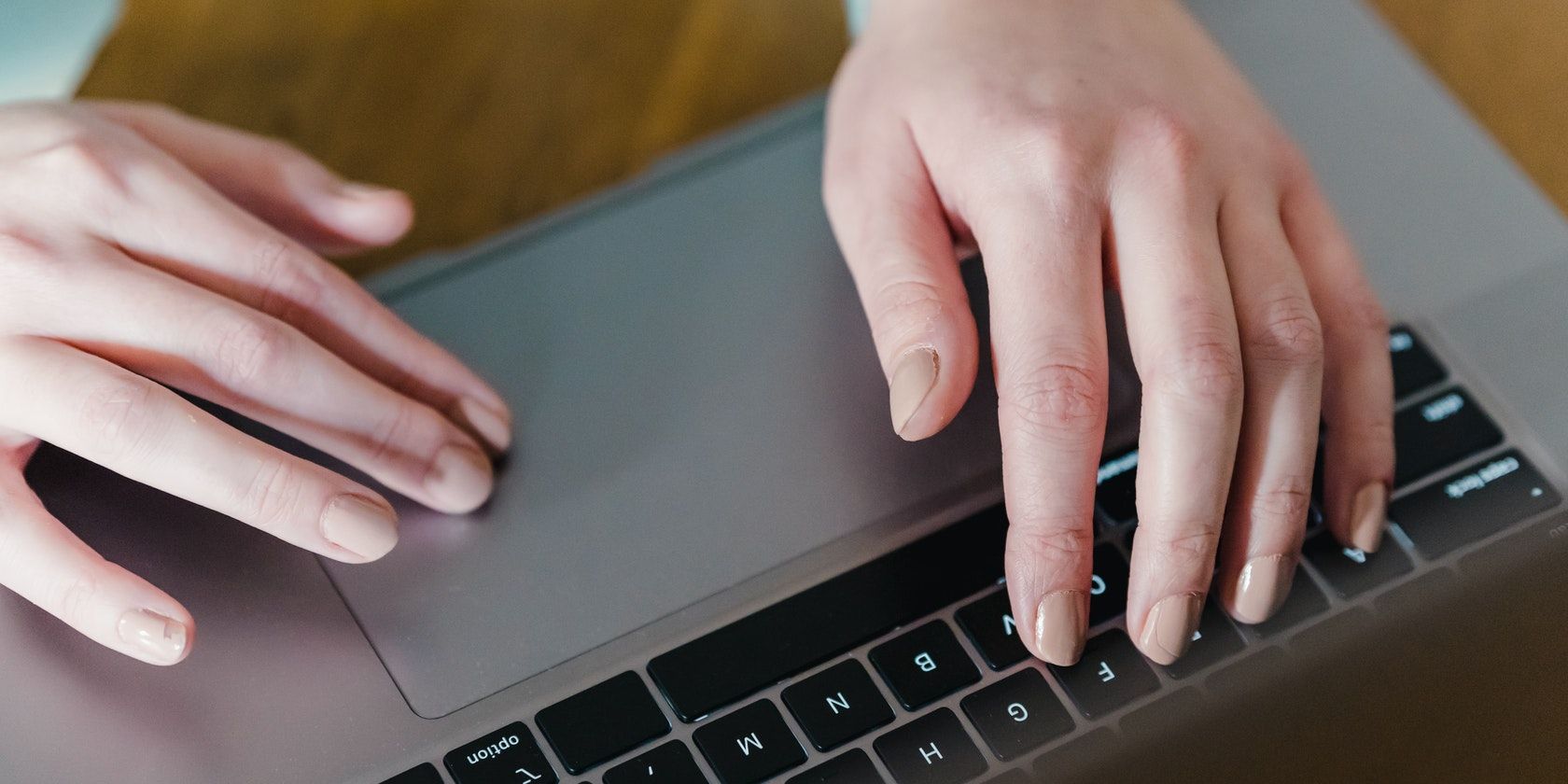
Trackpads provide a diverse array of functionalities that significantly improve the user experience. Familiarity with these features is essential for fully leveraging their capabilities.
a. Fundamental Functions
The main purpose of a trackpad is to manipulate the cursor displayed on the screen. Users can execute basic operations such as:
Clicking: Tapping the surface of the trackpad or pressing down (if it has a physical click feature) registers a click.
Double-Clicking: Quickly tapping the trackpad surface twice opens files or applications.
Right-Clicking: Many trackpads facilitate right-click actions through a two-finger tap or by pressing in the lower right corner.
b. Multi-Touch Gestures
A notable aspect of contemporary trackpads is their ability to recognize multi-touch gestures. These gestures improve navigation and efficiency by enabling users to perform various actions through a combination of finger movements. Common multi-touch gestures include:
Scrolling: Moving two fingers up or down allows users to scroll through documents or web pages.
Pinch-to-Zoom: Bringing two fingers together or spreading them apart zooms in or out on images or web content.
Swipe Gestures: Swiping left or right with three fingers can transition between applications, while swiping up reveals the application switcher.
c. Personalization
Most operating systems offer options to personalize trackpad settings to enhance the user experience. Users can modify sensitivity, enable or disable gestures, and adjust tracking speed to meet their preferences. These personalization options empower individuals to customize their trackpad experience according to their specific requirements.
4. Advantages of Trackpads
Trackpads present numerous benefits compared to conventional input devices such as mice. Recognizing these advantages can enhance users’ understanding of their significance in contemporary computing.
1. Compact Design
A primary benefit of trackpads is their compact design. Unlike mice, which necessitate a flat surface for optimal functionality, trackpads can be utilized in various settings, making them particularly suitable for portable devices. This feature is especially beneficial for laptop users who may face constraints in available workspace.
2. User-Friendly Interaction
Trackpads facilitate a user-friendly method of engaging with a computer. The gesture-based controls correspond with the natural movements of users’ fingers, resulting in a fluid experience. This intuitive interaction can boost productivity, allowing users to navigate their devices with greater ease.
3. Convenience of Portability
With the increasing prevalence of laptops and portable devices, the portability of trackpads stands out as a significant benefit. They remove the necessity for an external mouse, providing convenience for users who are frequently on the move. This aspect is particularly advantageous for travelers, students, and remote professionals.
4. Superior Precision
Contemporary trackpads offer a precision level that can compete with that of a mouse. Equipped with high-resolution sensors and customizable options, users can attain accurate cursor control, which is essential for activities such as graphic design and photo editing.
5. Disadvantages of Trackpads
Trackpads present a variety of advantages; however, they also come with specific drawbacks. It is important for users to be aware of these limitations when considering their use.
1. Limited Precision for Certain Tasks
Although trackpads can offer a degree of precision, they may not be ideal for every application. For instance, graphic designers and gamers often prefer a traditional mouse, as it provides superior precision and control for detailed movements.
2. Gesture Recognition Challenges
The gesture-based controls of trackpads may not be intuitive for all users. Some individuals might find it difficult to remember the different gestures or may struggle to perform them consistently, which can result in frustration and decreased productivity.
3. Fatigue During Extended Use
Prolonged use of a trackpad can lead to fatigue or discomfort in the hands and wrists, particularly for those who are used to a mouse. This discomfort can adversely affect productivity and overall user satisfaction.
6. Future Trends in Trackpad Technology
The outlook for trackpad technology is highly encouraging, characterized by continuous advancements that improve user experience and functionality. Below are several trends to monitor:
a. Haptic Feedback
The incorporation of haptic feedback technology into trackpads is on the rise. This feature provides users with tactile sensations, enabling them to perceive vibrations or resistance during specific actions like clicking or swiping. Such feedback can significantly enrich the user experience by making interactions feel more engaging.
b. Enhanced Customization
Future iterations of trackpads are likely to present broader customization capabilities, empowering users to tailor gestures and sensitivity settings to a greater degree. This enhanced level of personalization can better accommodate individual preferences and workflows.
c. AI Integration
Artificial intelligence (AI) is expected to influence the advancement of trackpad technology. AI-driven algorithms may improve gesture recognition, rendering trackpads more intuitive and responsive to user inputs. Furthermore, AI could analyze user behavior to recommend personalized settings or gestures.
d. Advanced Surface Materials
As manufacturers investigate new materials for trackpad surfaces, we may witness the emergence of superior materials that enhance glide and responsiveness. These innovations could lead to improved durability and greater resistance to wear and tear.
7. Tips for Using a Trackpad Effectively
To fully utilize the capabilities of a trackpad, users may consider implementing several strategies for optimal performance:
a. Learn the Gestures
Invest time in understanding the various gestures that your trackpad supports. Becoming proficient in these gestures can significantly boost your efficiency and streamline navigation.
b. Modify Sensitivity Settings
Adjust the sensitivity settings to discover a level that suits your preferences. Higher sensitivity may facilitate faster movements, whereas lower sensitivity can enhance precision.
c. Keep the Surface Clean
Regularly clean the trackpad to ensure it operates smoothly. Accumulated dirt and oils from your fingers can hinder performance, so maintaining a clean surface is essential for optimal responsiveness.
d. Take Regular Breaks
When using a trackpad for prolonged periods, it is advisable to take breaks to avoid fatigue. Stretching your hands and wrists can alleviate discomfort and help sustain productivity.
8. Conclusion
The trackpad has emerged as a fundamental component of contemporary computing, providing users with an intuitive and effective means of engaging with their devices. Its historical development, coupled with recent technological progress, has profoundly impacted our navigation within the digital realm. A comprehensive understanding of its features, benefits, and constraints enables users to value this crucial input device. As technology progresses, the future of trackpads holds the potential for remarkable innovations that will improve user experience and transform our interactions with computers.

